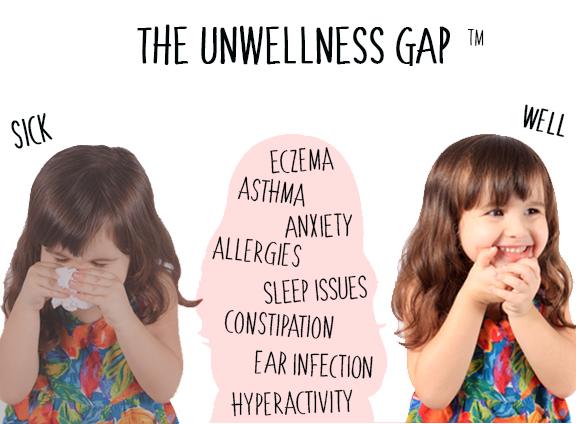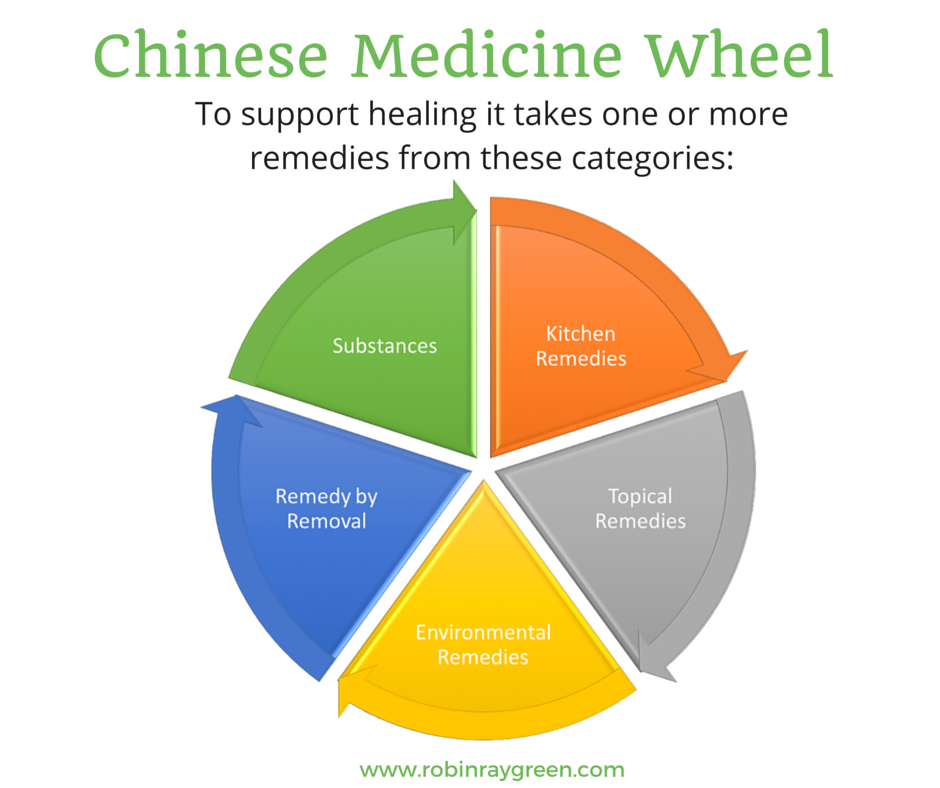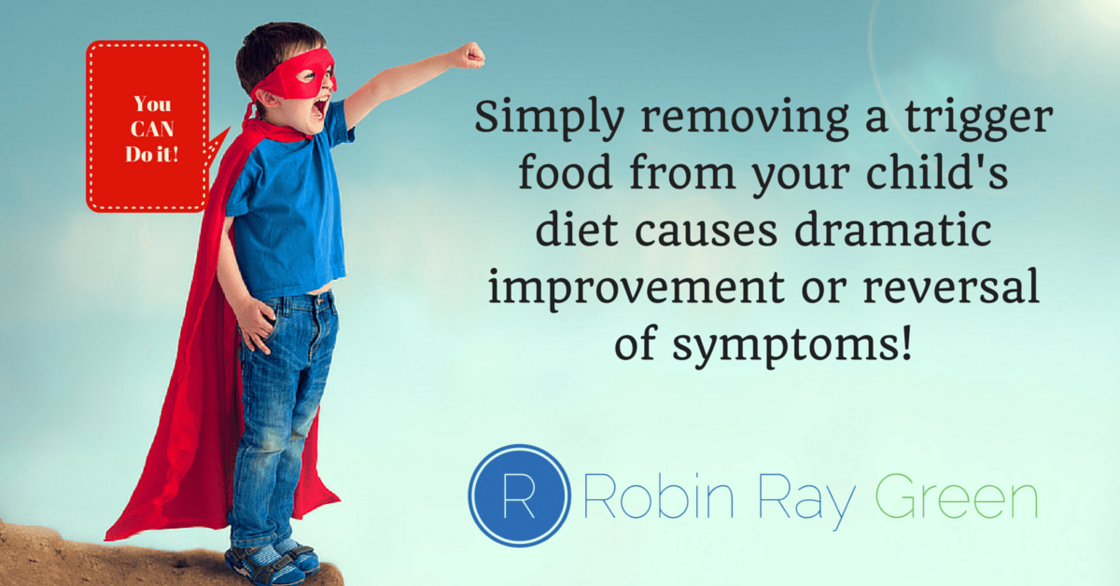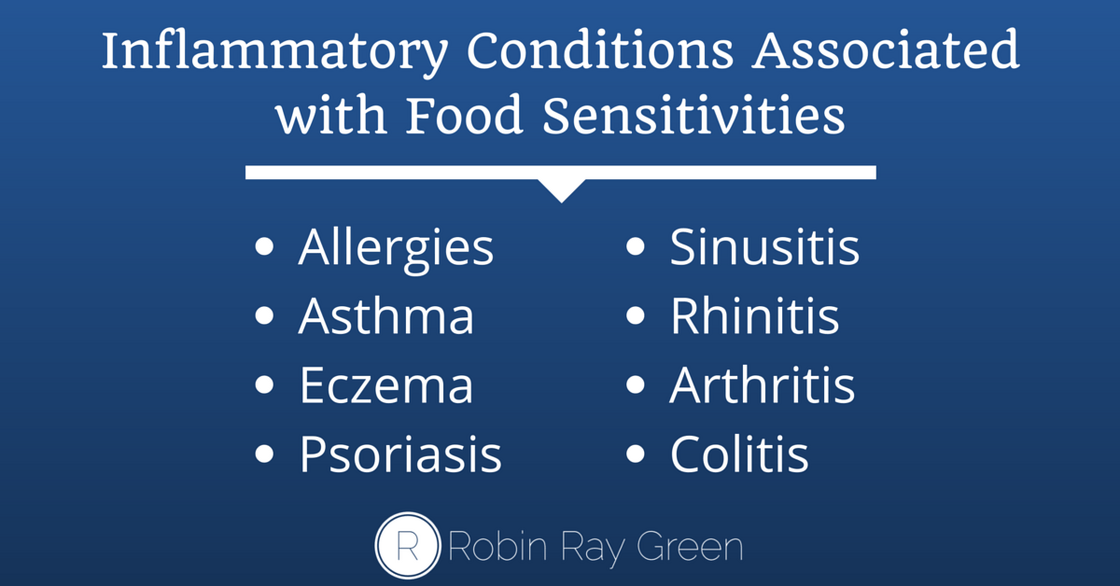
Have you been told to ride out your child’s illness or worse… wait for him to outgrow it?
That’s exactly what I was told when Western medical treatments weren’t working for my son’s severe eczema. If you’re like me, you want to help your child heal now. You want relief sooner rather than later, and you’re ready to do whatever it takes. Millions of children fall into the Unwellness Gap(TM) because they’re not totally sick, but they’re not totally well, either. They suffer from frequent illnesses and inflammatory conditions like allergies, asthma, eczema, constipation, stomachaches, sleeping problems, anxiety, and hyperactivity. Their problems often warrant repeated visits to doctors and specialists in search of a way to manage symptoms.
There’s no pill that can cure unwellness.
But, there are still many different ways we can blend Eastern and Western medicine to help children in the Unwellness Gap(TM) heal. The Chinese medicine wheel can give us some ideas for restoring balance!

Chinese Medicine Wheel (TM)[/caption] Many of the health conditions listed here can be healed with acupressure, massage, and herbs along with changes to diet and lifestyle. Making these changes is like starting on a journey and it will take time and effort to make them. Are you ready to give it a try?
When I’m working with kids who have chronic issues, the first place I look is their diet.
What if by simply changing what your child eats you can get rid of annoying chronic symptoms? It really can be that simple. What I’ve seen time and time again is certain foods trigger adverse reactions in the body anywhere from an hour to seventy-two hours after the offending food is consumed.They can cause both chronic and acute symptoms in children, especially the kind of symptoms that aren’t solved by pharmaceuticals and don’t respond to normal treatments. But, after removing a food that that the body is sensitive to a child is often symptom-free or dramatically improved! I explain exactly how this process works in my Food Sensitivities 101 class.
How are food sensitivities detected?
Sometimes food sensitivities can be measured by a blood test and other times they’re reactions parents observe after their child eats the offending ingredient. An elimination diet is one of the primary ways you can detect food sensitivities.

Below you’ll find the top 7 health challenges associated with food sensitivities:
1. Colic
If your baby is gassy, fussy, and cries for hours, chances are he or she has a food sensitivity. For breastfed babies, this means that there’s something in Mom’s diet that is triggering uncomfortable symptoms for the baby. If the baby is formula fed, it’s likely that the baby is having an adverse reaction to ingredients in the baby formula. It would be best switch to a different formula (except for soy formula, which is not recommended) or to explore making a homemade formula.
2. Dark Circles Under the Eyes
This is one of the obvious signs in children that there’s a food sensitivity, especially if they have other symptoms on this list.
3. Digestive Problems or Toddler’s Diarrhea
Digestive problems include constipation, loose stools, nausea, and stomachaches. Daily diarrhea in toddlers may be common, but it’s not normal. If your child had gone through a full medical work-up and there’s “nothing wrong” then it’s likely that an underlying food sensitivity is the culprit.
4. Emotional and/or Behavioral Issues
Food sensitivities can show up as difficulty with age appropriate emotional regulation, anxiety, or depression. It can also show up as hyperactivity or difficulty focusing.
5. Chronic Runny Nose or Sniffles
When kids have a runny nose that never seems to go away, there’s usually a food sensitivity that’s creating the excess mucus production.
6. Frequent Upper Respiratory or Ear Infections
Many parents bring their kids in for treatment at my clinic because their child has more days sick with these problems than well. And if repeated rounds of antibiotics aren’t solving the problem, then parents are left trying to solve the problem on their own. In the vast majority of these cases, eliminating the trigger food clears up the issue!
7. Chronic Inflammatory Illnesses
The gut and the immune system are intricately linked, so anytime there’s a chronic inflammatory issue there’s often an imbalance in the gut that is contributing to inflammation and causing issues like: allergies, asthma eczema, arthritis, dermatitis, sinusitis, psoriasis, or any other chronic ‘-itis’

Resistance to the idea of food sensitivities is very common, and doctors rarely address food sensitivities as a source of illness.
Parents often don’t want to go down the rabbit hole because it seems scary and overwhelming to change their children’s diets, especially if their pediatricians aren’t particularly supportive. But you can also look at it this way: if food is the problem, then it’s something that you can manage because what you feed your child is under your control. So there’s something concrete you can do about your child’s symptoms—and that’s very good news!
If you’re interested in learning how to treat Food Sensitivities, be sure to check my online class Food Sensitivities 101 for more information on how to identify and treat food triggers.
Do you think your child may have a food sensitivity? Please share your experience in the comments below.
Get Robin's step-by-step plan for discovering hidden food triggers that could be making your child sick.



Comments